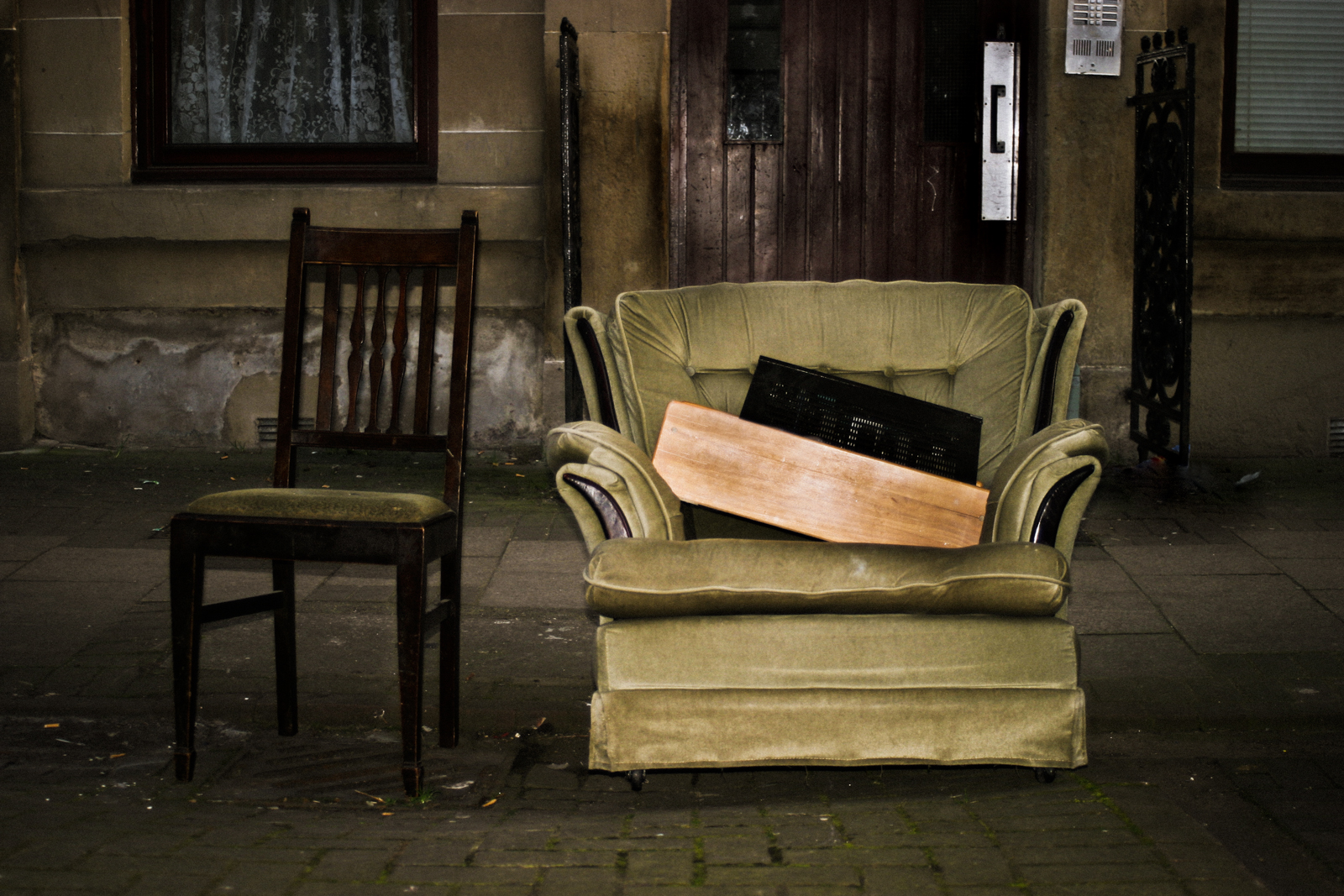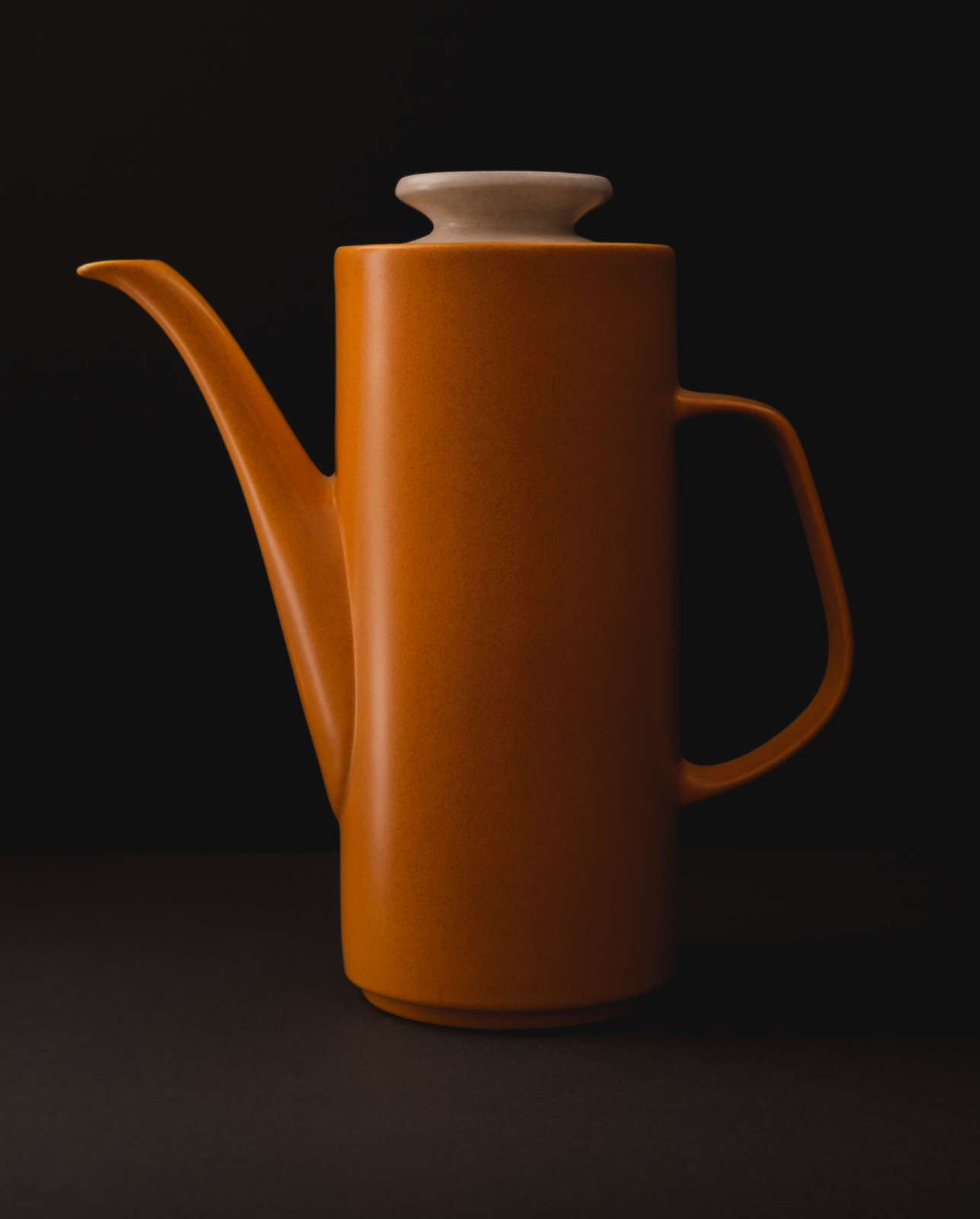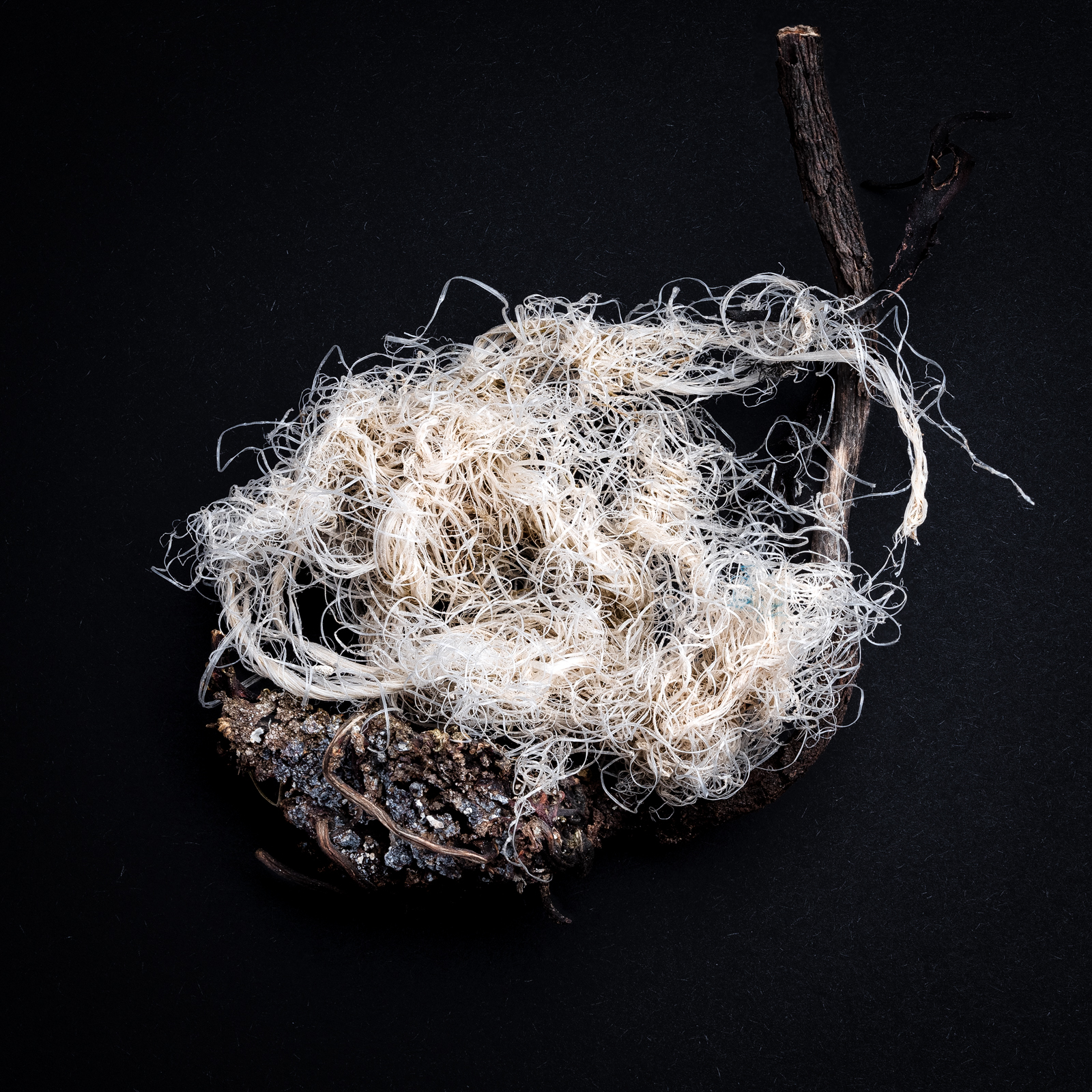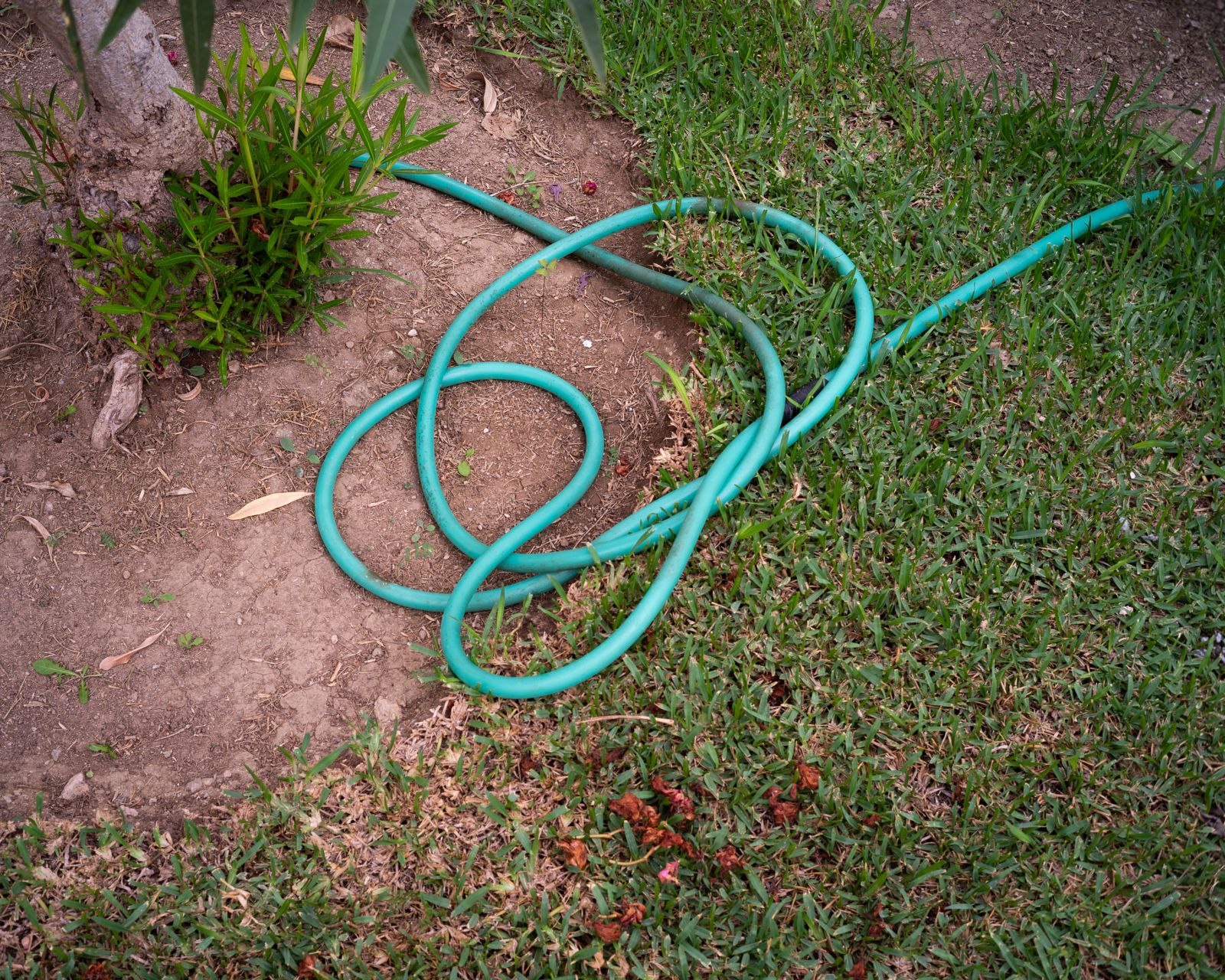I discovered this beautiful object on a beach on Holy Island, Northumberland. From a distance it was an exotic sea plant of some kind, close up it is an entangled union of dried seaweed and the unraveled remnants of what looks to be rope or fishing net. This piece of sea junk is by comparison a tiny fraction of what is lost or discarded by the fishing industry.
As much as 2% of all commercial gear is lost in the ocean every year! Weighing up to a million tons, it is mostly lines and nets, but for perspective it is estimated the 2% includes 13.99 billion longline hooks and 25.4 million pots and traps — every year! For a visual comparison, in total that’s equivalent in weight to about 50,000 double decker buses.
The polymers used for nets and ropes take up to 600 years to breakdown. Known as ghost fishing gear, it entangles and kills up to 650,000 sea animals every year, which, according to the World Wildlife Fund, includes as many as 300,000 whales and dolphins.
Global currents concentrate floating materials in gyres; areas where circular systems of ocean currents rotate around a central point. It’s in these regions of floating garbage patches where a whole spectrum of plastics and other debris converge. The largest of these five zones is The Great Pacific Garbage Patch, with a mass of plastic estimated to be approximately 100,000 tonnes, equivalent to more than 740 Boeing 777s, and three times the size of France.
While the fishing industry loses around 1 million tons of gear annually, estimates of how much more plastic enters the oceans range wildly from 1 million tons up to and over 10 million tons. And while the accumulated plastic is being battered by the sea, and bathed in sunlight, it is slowly breaking down, shedding threads and flakes of plastic, and in-turn microplastics.
The definition of a microplastic is a piece of plastic ranging in size from 1 nanometer, 1/80,000 the width of a strand of hair, to 5mm. Microplastics are easily mistaken by sea creatures as food and affects the whole food chain resulting in larger predators ingesting an accumulation of plastic, a process called bioaccumulation. The majority of plastics found in fish are in their guts where, as well as physical damage, the degrading materials release toxins leading to issues including, neurotoxicity, growth retardation, and behavioural abnormalities.
It follows, therefore, that the world’s most powerful predator, humans, are also accumulating plastics in their bodies. What goes round, comes round – so to speak. Studies have found the presence of microplastics in supermarket fish but the source of fibres is somewhat closer to home. In a study, 80% of the microscopic synthetic fibres lurking in the flesh of fish were from clothes shed in washing machines finding their way into rivers and oceans.
Across Europe, waste water is collected and processed at sewage treatment plants. Left over sludge from the process is spread on farmland. In a 2022 study, scientists from Cardiff University and the University of Manchester estimated that between 31,000 and 42,000 tonnes of microplastics (or 86 – 710 trillion microplastic particles) are applied to European soils annually, mirroring the concentration of microplastics found in ocean surface waters. Other studies have concurred and include reference to synthetic fibres found in clothing. Microplastics in sludge are prone to being washed into streams and rivers during heavy rains. Water companies in the UK are also increasingly guilty of dumping untreated sewage directly into rivers.
What happens to the microplastics that remain on the farm field? Experimental studies in fully controlled environments have proven that plants can carry nanoscale (<100 nm), submicrometer (<1 μm), and micro-sized (≥1 μm) plastics from their roots to their leaves. In studies of food bought in markets, microplastics have been found in commonly consumed fresh fruits and vegetables. Further studies have shown that microplastics hinder plant photosynthesis which could lead to lower crop yields, threatening millions with starvation.
Microplastics are also in the air. Plump a cushion on your sofa and that dust you see in the sunlight will contain microplastics. They are all around us, and travelling thousands of miles on winds. Analysis of a core from Greenland’s ice cap showed that nanoplastic contamination has been polluting the remote region for at least 50 years. It lands everywhere, on the streets, on fields where animals graze, in our houses, and in our bodies.
Over a lifetime our bodies accumulate a cocktail of toxic oddities, through pollution, what we eat, and complex chemicals used in just about everything manufactured. Our bodies can tolerate a lot but scientific research does point to evidence of resulting illnesses in the population. But when up against many of the richest corporations in the world, change is inevitably slow. Nothing though can be more alarming than a 2024 study reporting the levels of microplastics discovered in brain tissue. All the samples included some plastic but 24 of the 91 samples were 0.5% plastic by weight; about 7 grams in an adult brain, equivalent in weight to a plastic spoon. More concerning is that’s 50% higher than in samples from 2016, which is similar to the rate of rising concentration in the environment. Returning to the sea, seabirds have been found to have brain damage similar to Alzheimer’s as a result of plastic pollution.
In terms of the all-round damage we are doing to our planet, it feels as though we accelerating towards the end of the road. We are said to be in the Anthropocene epoch, a period defined by human influence on the earth. Mother nature will always win, but like any loving mother she can also forgive and give us another chance.
We’ve all heard the saying that the rain forests are the lungs of the earth. Trees do a great job of absorbing CO2 and providing up to 28% of the oxygen we breathe. In comparison oceans absorb heat, CO2 and provide us with as much as 80% of our oxygen.
The oceans are already under considerable stress. Not quite dying yet; ocean eco systems are being destroyed, food chains are being disrupted, the chemistry is changing, and temperatures are rising. In our rush to save the world, mankind is scouring the globe for precious materials to feed the electric car revolution and to further provide for electronics industries. The seabed beckons prospectors to mine untold bounty. World authorities will wrestle with the pros and cons of this and the miners will promise little to no damage to the environment but the world is littered with the toxic legacy of our exploits. Imagine what will happen thousands of feet below the surface where no one can see.
For sure I’ve lived a life of waste. Possibly not as much as others, but plodding along as a regular first-world human I’ve done my damage from the moment I arrived in 1963. I recently held in my arms the newest arrival to our extended family. At just a few weeks old, I couldn’t help but wonder what the world holds for her, but more than anything I hoped humanity gets its shit together!
Do I still like the object I found on the beach? Yes. Now it has meaning. I can still enjoy its happenstance beauty; mother nature sculpted it for me. I’m also reminded to tell this story to others, and to be mindful of the little things I can do to improve our environment.
Further reading and sources:
- Microplastics are infiltrating brain tissue, studies show: ‘There’s nowhere left untouched’. The Guardian, 21st August 2024.
- The Human Brain May Contain as Much as a Spoon’s Worth of Microplastics, New Research Suggests. Smithsonian Magazine. 2nd February 2024
- The Age of Humans: Evolutionary Perspectives on the Anthropocene. The Smithsonian
- Nanoplastic pollution found at both of Earth’s poles for first time. The Guardian, 21st February 2022
- ‘They’re in the air, drinking water, dust, food …’ How to reduce your exposure to microplastics. The Guardian, 10th July 2023
- European farmland could be biggest global reservoir of microplastics. Cardiff University, 6th May 2022.
- Synthetic fibers as an indicator of land application of sludge. Environmental Pollution. November 2005
- Ocean plastic pollution explained. The Ocean Cleanup
- The Great Pacific Garbage Patch. The Ocean Cleanup
- Mapping Marine Microplastics. Earth Observatory
- The Impact of Ghost Gear: What It Is and How to Take Action. Waterhaul
- Plastic pollution leaves seabirds with brain damage similar to Alzheimer’s The Guardian, March 12th 2025
- As countries scramble for minerals, the seabed beckons. Will mining it be a disaster? The Guardian, March 12th 2025
- Microplastics hinder plant photosynthesis, study finds, threatening millions with starvation The Guardian March 10th 2025
- Why the Ocean is so important for life on earth Unesco
- Will the ocean really be dead in 50 years? The Natural History Museum



